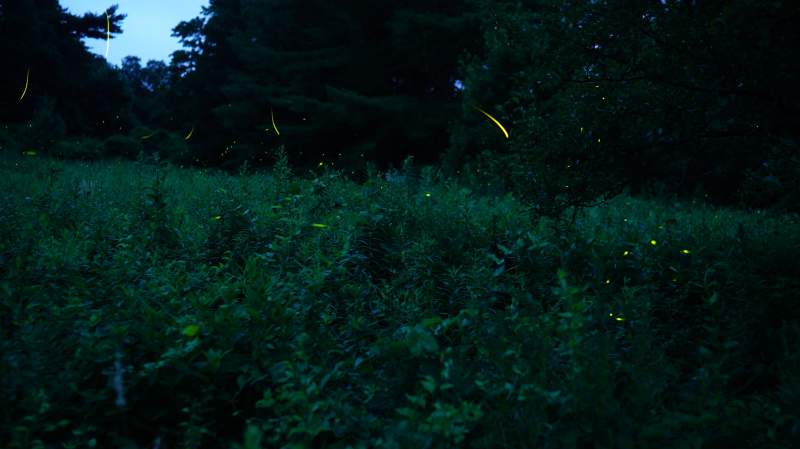THE FIREFLY DISPLAY TIMELINE – NEW CANAAN, CONNECTICUT
May 15- The treetops and flashbulb fireflies show up in significant numbers.
May 29- Lots of glowing larva and some displaying fireflies.
June 1 through June 10 - The blackout period with virtually no displays until the fireflies eclose starting June 14.
June 16 - The start of the strong display nights with the femme fatale Photuris comets beginning to streak through the displays of the males of the other firefly species.
June 21 through July 10 - The strongest display period with the peak July 7. The Photinus pyralis are the last of my species to eclose.
July 17 - The Photinus pyralis big dippers and photuris comets still going strong while the other species end their displays. The Photuris comets continue into August and are the last to flash, often just a single fast firefly streaking through the night.

More Information About the Different Species Within the Timeline
The photinus pyralis are active for the whole month of July. They are the only species to display at dusk at 830pm and are finished at about the same time the other species start at 9pm.
In late June the species’s displays overlap and it is entertaining to pick out from their flash patterns the photuris comets, versicolor tripple flashers, photinus pyralis, and what may be hebe jeebies.
My favorite fireflies are the male comets that stay lit floating in the air like Tinkerbell, the tripple flashers, speedy female comets, and big dippers.
The longest lived fireflies here are female comets that display June through August. Its not surprising because they are the only adult firefly eating protein, other fireflies.
While on the topic of eating, it is interesting that fireflies here eat blueberries and raspberries. The firefly population here is so dense you can observe them in the day.
After 50 years of work in the meadow, the firefly population is at its maximum carrying capacity which was reached about 10 years ago. There is some variation year to year in the individual species but they appear to be in equilibrium with the versicolor triple flashers perhaps increasing.